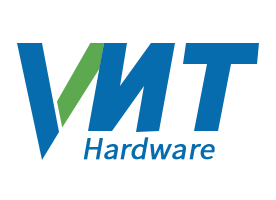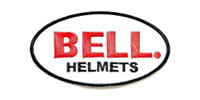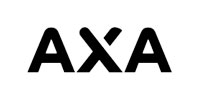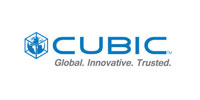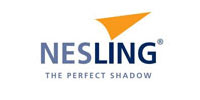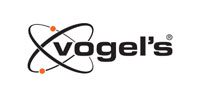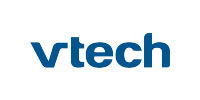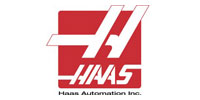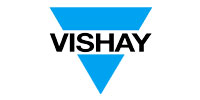Glossary
There’s a lot of industry terms to sort through in manufacturing. Explore our glossary for quick definitions of frequently used manufacturing terms and acronyms.
There’s a lot of industry terms to sort through in manufacturing. Explore our glossary for quick definitions of frequently used manufacturing terms and acronyms.
The straight-line distance or angle from a coordinate system’s origin.
Programming using control words that represent absolute dimensions.
A strategically placed inclined pin, designed to retract a sliding core in a plastic injection mold tool.
One type of surface passivation. An oxide layer on the surface of a part is created by replacing some of the surface molecules with ions from an electrolyte bath.
The reference direction along which a component of the machine tool can move linearly or rotate reversibly.
An interpolation method in which, based on numerical information between two endpoints, a group of points approximating the actual arc are calculated, and the tool is controlled to move along these points to machine the arc.
Computer Integrated Manufacturing System.
The trajectory formed by the tool reference point rotating around the trajectory center in a negative angle direction.
A machining process that uses rotating tools to cut the workpiece.
Using a computer and appropriate general processing steps and post-processing steps to prepare part programs to obtain machining procedures.
Liquid used to cool the tool and workpiece during machining, helping to extend tool life and improve machining quality.
The trajectory formed by the tool reference point rotating around the trajectory center in a positive angle direction.
Manual Part Programming: Programming the processing steps of a part manually.
A displacement perpendicular to the tool path used to correct the difference between the actual tool radius and the programmed tool radius.
A cutting tool used in CNC machining, such as a milling cutter, drill bit, turning tool, etc.
The speed at which the tool moves on the workpiece, usually expressed in revolutions per minute (RPM) or inches per minute (IPM).
The difference between a calculated, observed, or actual value and a true, given, or nominal value.
A set of instructions in a CNC system that creates operational capabilities.
The feed amount per revolution or per minute of the tool on the workpiece, affecting cutting efficiency and surface quality.
Flexible Manufacturing Cell in CNC machining.
Flexible Manufacturing System in CNC machining.
Programming using control words that represent incremental dimensions
The distance or angle from a point to the previous point in a sequence of points.
The process of determining the position coordinate values of multiple intermediate points between two known points on a required path or shape line based on a certain mathematical function (such as a straight line, arc, or higher-order function).
The smallest incremental unit for commanding a coordinate axis to move from the numerical control unit.
The smallest incremental unit that can be input in a machining step.
An interpolation method in which interpolation along a straight line of points approximates the path, controlling the movement of the tool along this line.
The origin of the machine coordinate system.
A Cartesian coordinate system fixed on the machine tool, with the machine zero as the reference.
The machine origin specified by the machine tool manufacturer.
The amount of material removed from the workpiece per unit time.
A manual control function that allows the operator to modify programmed values of rates (such as feed rate, spindle speed) during machining.
A process sheet prepared for a part before designing its machining steps.
The distance that the coordinate moves each time the CNC machining center issues a pulse, used to distinguish the smallest interval between adjacent details and is an important indicator of precision.
A stable point along a coordinate axis used for machine start-up, which can be referenced to the machine coordinate origin.
The smallest interval that can be distinguished between two adjacent separate quantities.
The consistency of the results obtained when processing a batch of parts on the same CNC machine using the same program and code.
A servo system in which the controlled variable is mechanical position or the derivative of mechanical position with respect to time.
A part of a machining program that can be called and executed by appropriate machining control instructions.
The process of considering the influence of tool size and wear on machining accuracy during CNC programming and making corresponding adjustments.
The offset in the tool length direction.
A relative displacement applied to a machine coordinate axis during all or a specified part of a machining step, with the direction of axis displacement determined by the sign of the offset value.
The trajectory of a regular point on the cutting tool.
The rate at which a reference point on the tool moves relative to the workpiece along the tool path, usually expressed in units of movement per minute or per revolution.
The tool offset in two coordinate directions.
Raw material or semi-finished product to be machined.
The origin of the workpiece coordinate system.
A Cartesian coordinate system fixed on the workpiece.
A type of injection molding in which two resins with different properties are processed sequentially in separate cavities of a single tool.
Also known as additive manufacturing, this refers to the production of a solid object by sequentially building up 2D layers of printing substrate.
This site uses cookies. By continuing to browse the site, you are agreeing to our use of cookies.
OKLearn moreWe may request cookies to be set on your device. We use cookies to let us know when you visit our websites, how you interact with us, to enrich your user experience, and to customize your relationship with our website.
Click on the different category headings to find out more. You can also change some of your preferences. Note that blocking some types of cookies may impact your experience on our websites and the services we are able to offer.
These cookies are strictly necessary to provide you with services available through our website and to use some of its features.
Because these cookies are strictly necessary to deliver the website, refusing them will have impact how our site functions. You always can block or delete cookies by changing your browser settings and force blocking all cookies on this website. But this will always prompt you to accept/refuse cookies when revisiting our site.
We fully respect if you want to refuse cookies but to avoid asking you again and again kindly allow us to store a cookie for that. You are free to opt out any time or opt in for other cookies to get a better experience. If you refuse cookies we will remove all set cookies in our domain.
We provide you with a list of stored cookies on your computer in our domain so you can check what we stored. Due to security reasons we are not able to show or modify cookies from other domains. You can check these in your browser security settings.
These cookies collect information that is used either in aggregate form to help us understand how our website is being used or how effective our marketing campaigns are, or to help us customize our website and application for you in order to enhance your experience.
If you do not want that we track your visit to our site you can disable tracking in your browser here:
We also use different external services like Google Webfonts, Google Maps, and external Video providers. Since these providers may collect personal data like your IP address we allow you to block them here. Please be aware that this might heavily reduce the functionality and appearance of our site. Changes will take effect once you reload the page.
Google Webfont Settings:
Google Map Settings:
Google reCaptcha Settings:
Vimeo and Youtube video embeds:
The following cookies are also needed - You can choose if you want to allow them:
